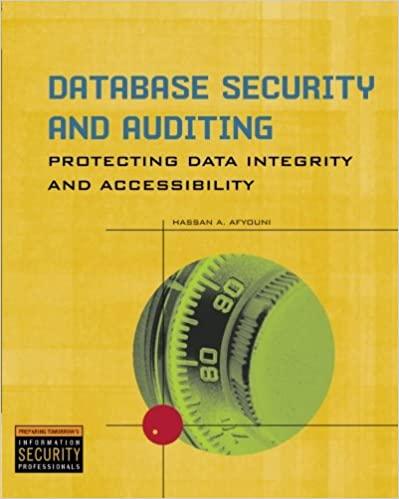Question
Larson Company had the following transactions throughout the year 2018: 1. On February 11, 2018, Larson learned that one of their suppliers had been selling
Larson Company had the following transactions throughout the year 2018: 1. On February 11, 2018, Larson learned that one of their suppliers had been selling faulty parts, which Larson had incorporated in several of their products. Larsons legal counsel deemed that it was probable that Larson would be found liable in a lawsuit and the amount of the loss could range from $800,000 to $1,700,000. 2. On April 1, Larson collected $30,000 for one-year of advanced rent on a warehouse that it owned. 3. On June 11, Larson filed a lawsuit against the supplier of the faulty parts for $2,200,000. Larsons lawyer believes that it is probable that Larson will win the lawsuit and the amount is a reasonable estimate of the award settlement. 4. On July 1, 2017, Larson obtained a nine-month, 8%, $50,000 loan from ABC Financial. The principal and interest will be repaid on February 28, 2019. 5. On October 12, Larson was advised by its lawyers that three of its former employees were suing Larson for $2,000,000 for wrongful termination. Larsons lawyers have deemed that it is possible that the Larson will lose the lawsuit but that the amount of the loss will be approximately $900,000 and not $2,000,000. 6. On December 1, Larson purchased $1,350 of supplies on account. Larson has 45 days to pay for the supplies before it starts accruing interest and late fees. Larson paid $800 of the amount 10 days after the date of purchase. 7. On December 5, Larson sold $5,000 worth of goods on account. The customer has 30 days to pay the bill. The customer paid $1,000 15 days after the date of sale and promised to pay the balance by the due date. 8. As of December 31, 2018 Larsons employees had accrued $240,000 of salaries that were to be paid on January 4, 2019. 9. Throughout the year, Larson sold $630,000 of equipment that had a one-year warranty. Larson estimates that 1% of all sales will be returned for defects and that the defects will cost $3.50 to repair. As of December 31, Larson had paid $8,600 of repairs for the year. (Assume there was no beginning balance in the warranty liability account). 10. On December 31, 2018, Larson obtained a 10-year, $400,000 mortgage for its new warehouse. Below is the amortization table for this mortgage. Principal: $400,000.00 Interest Rate: 3.50% Payment Interval: Annually # of Payments: 10 Payment: $48,096.55 Schedule of Payments Pmt # Payment Principal Interest Balance 1 48,096.55 34,096.55 14,000.00 365,903.45 2 48,096.55 35,289.93 12,806.62 330,613.52 3 48,096.55 36,525.08 11,571.47 294,088.44 4 48,096.55 37,803.45 10,293.10 256,284.99 5 48,096.55 39,126.58 8,969.97 217,158.41 6 48,096.55 40,496.01 7,600.54 176,662.40 7 48,096.55 41,913.37 6,183.18 134,749.03 8 48,096.55 43,380.33 4,716.22 91,368.70 9 48,096.55 44,898.65 3,197.90 46,470.05 10 48,096.50 46,470.05 1,626.45 0 Grand Total 400,000.00 80,965.45 11. On December 31, 2018, Larson made adjusting entries to record Interest on the loan (from item 4) and revenue earned (from item 2). Required: 1. For each of the scenarios above, determine how much would be classified as a current liability and how much would be classified as a non-current liability. If an amount is not classified as a liability, explain how we would account for it. 2. What is the ending balance in the Current Liabilities account as of December 31, 2018?
Step by Step Solution
There are 3 Steps involved in it
Step: 1

Get Instant Access to Expert-Tailored Solutions
See step-by-step solutions with expert insights and AI powered tools for academic success
Step: 2

Step: 3

Ace Your Homework with AI
Get the answers you need in no time with our AI-driven, step-by-step assistance
Get Started


